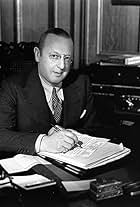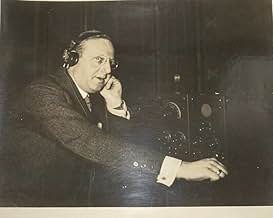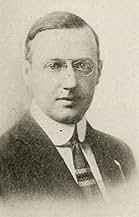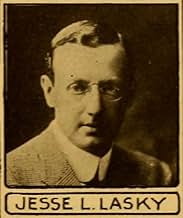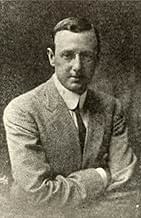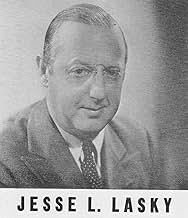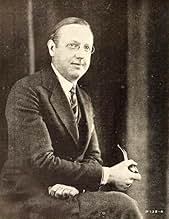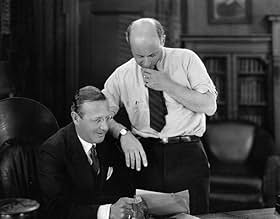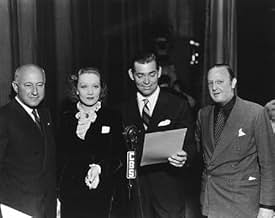Jesse L. Lasky(1880-1958)
- Additional Crew
- Producer
Lasky, one of the first pioneers of the Hollywood film industry and its
first genuine 'mogul', was not only a consummate showman and
entrepreneur, but a jack-of-all-trades. Born in San Francisco in
September 1880, the son of a shoe salesman, he attended high school in
San Jose and held down his first job at seventeen as a reporter for the
San Francisco Post. He supplemented his scant income by moonlighting as
a cornettist at local theatres. In 1899, he became infected with the
prevailing gold fever and joined the rush to Alaska. He found no gold,
but instead lost his own money. The next ten years saw him playing his
cornet in Honolulu as the only white musician in the Royal Hawaiian
Band, and then forming a vaudeville double act with his sister Blanche,
touring on the East Coast and in Europe. By 1911, Lasky had established
himself in New York. Already corpulent, balding, and wearing his
trademark rimless glasses, looking every inch the promoter, Lasky
started to produce musicals and comedy sketches for vaudeville. He also
set up his own nightclub in New York, but it turned out a financial
fiasco to the tune of $100,000. Having befriended the actor and writer
Cecil B. DeMille, Lasky then decided to
make his fortune in the burgeoning film industry.
In 1913, along with DeMille and his brother-in-law Samuel Goldfish (later to become Samuel Goldwyn), Lasky established the Jesse L. Lasky Feature Play Company with a starting capital of $26,500. His first feature was to be an epic western, The Squaw Man (1914), acquired for the then-princely sum of $15,000. It was to be filmed not at the regular facilities at Ft. Lee, New Jersey, but - for added realism - on location out west. Once arrived at their destination, Flagstaff, Arizona, Lasky and his companions found themselves in the middle of an old-fashioned range war between cattlemen and sheepmen. They wisely decided to keep on going and ended up in the small Californian town of Hollywood, where they rented a barn at the corner of Vine and Selma Street for $75 a month.
Production on the first ever feature shot in Hollywood began with one barn, one truck and a single camera (operated by Oscar Apfel) in January 1914. 'The Squaw Man' was a huge financial success, enabling Lasky to contract several new stars, including Blanche Sweet, Wallace Reid and Ina Claire. In 1915, he scooped his competitors again, by signing popular opera diva Geraldine Farrar to a three-picture deal for a fee of $20,000, a house (complete with servants), a chauffeur-driven limousine and a private railway carriage for her trip from, and back to, the Big Apple. At this time, the company counted among its regular roster, five directors, five cinematographers and some eighty contract players. All output was released through the Paramount Pictures Corporation, which had been formed by Adolph Zukor in partnership with Lasky, Goldfish and West Coast theatre proprietor W.W. Hodkinson. In 1916, Lasky merged with Zukor's Famous Players to become Famous Players Lasky (re-formed as Paramount in 1927), serving as vice president in charge of production under Zukor . In this capacity, he imprinted his artistic vision on much of the studio's output during the silent era, signing Rudolph Valentino for The Sheik (1921), discovering Maurice Chevalier in 1929, and so on. His input was also reflected in Paramount's overall predilection for adventure films and romances with a continental flavour. Paramount emerged from the silent era as the pre-eminent studio in Hollywood with the most cosmopolitan roster of stars and directors. Lasky himself became enormously wealthy, amassing a fortune estimated somewhere between $12 and $20 million - and losing it all during the Wall Street Crash.
Under pressure from the IRS and back-stabbed by his own personal assistant, Lasky was eventually ousted from his executive position at Paramount in 1932. Unsettled, he worked as an independent producer for Fox, then Warner Brothers and RKO. There was also a short-lived partnership with Mary Pickford in 1935, and, between 1938 and 1940, he produced his own radio talent show, 'Gateway to Hollywood'. During his final creative spell at Warners, he produced three seminal motion pictures: Sergeant York (1941), The Adventures of Mark Twain (1944) and Rhapsody in Blue (1945). For the last few years of his life, he was virtually unemployed. In 1957, Lasky finally returned to Paramount to work on a project which was to settle his dept with the IRS. He never completed it, dying in January 1958, almost forgotten by the industry he helped to create.
In 1913, along with DeMille and his brother-in-law Samuel Goldfish (later to become Samuel Goldwyn), Lasky established the Jesse L. Lasky Feature Play Company with a starting capital of $26,500. His first feature was to be an epic western, The Squaw Man (1914), acquired for the then-princely sum of $15,000. It was to be filmed not at the regular facilities at Ft. Lee, New Jersey, but - for added realism - on location out west. Once arrived at their destination, Flagstaff, Arizona, Lasky and his companions found themselves in the middle of an old-fashioned range war between cattlemen and sheepmen. They wisely decided to keep on going and ended up in the small Californian town of Hollywood, where they rented a barn at the corner of Vine and Selma Street for $75 a month.
Production on the first ever feature shot in Hollywood began with one barn, one truck and a single camera (operated by Oscar Apfel) in January 1914. 'The Squaw Man' was a huge financial success, enabling Lasky to contract several new stars, including Blanche Sweet, Wallace Reid and Ina Claire. In 1915, he scooped his competitors again, by signing popular opera diva Geraldine Farrar to a three-picture deal for a fee of $20,000, a house (complete with servants), a chauffeur-driven limousine and a private railway carriage for her trip from, and back to, the Big Apple. At this time, the company counted among its regular roster, five directors, five cinematographers and some eighty contract players. All output was released through the Paramount Pictures Corporation, which had been formed by Adolph Zukor in partnership with Lasky, Goldfish and West Coast theatre proprietor W.W. Hodkinson. In 1916, Lasky merged with Zukor's Famous Players to become Famous Players Lasky (re-formed as Paramount in 1927), serving as vice president in charge of production under Zukor . In this capacity, he imprinted his artistic vision on much of the studio's output during the silent era, signing Rudolph Valentino for The Sheik (1921), discovering Maurice Chevalier in 1929, and so on. His input was also reflected in Paramount's overall predilection for adventure films and romances with a continental flavour. Paramount emerged from the silent era as the pre-eminent studio in Hollywood with the most cosmopolitan roster of stars and directors. Lasky himself became enormously wealthy, amassing a fortune estimated somewhere between $12 and $20 million - and losing it all during the Wall Street Crash.
Under pressure from the IRS and back-stabbed by his own personal assistant, Lasky was eventually ousted from his executive position at Paramount in 1932. Unsettled, he worked as an independent producer for Fox, then Warner Brothers and RKO. There was also a short-lived partnership with Mary Pickford in 1935, and, between 1938 and 1940, he produced his own radio talent show, 'Gateway to Hollywood'. During his final creative spell at Warners, he produced three seminal motion pictures: Sergeant York (1941), The Adventures of Mark Twain (1944) and Rhapsody in Blue (1945). For the last few years of his life, he was virtually unemployed. In 1957, Lasky finally returned to Paramount to work on a project which was to settle his dept with the IRS. He never completed it, dying in January 1958, almost forgotten by the industry he helped to create.
